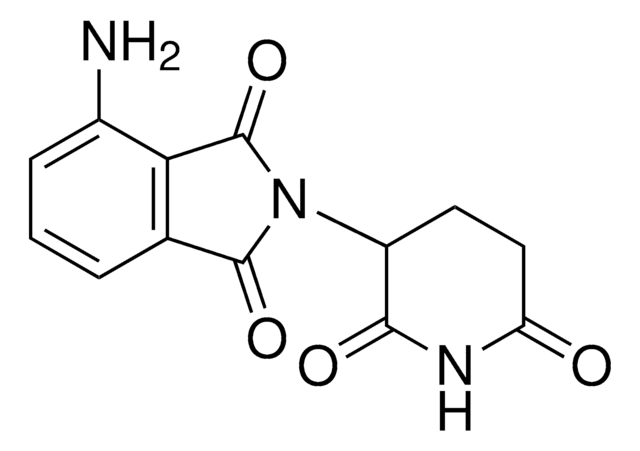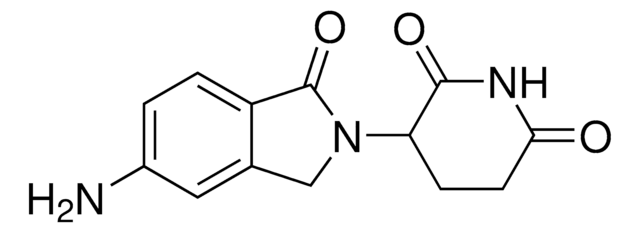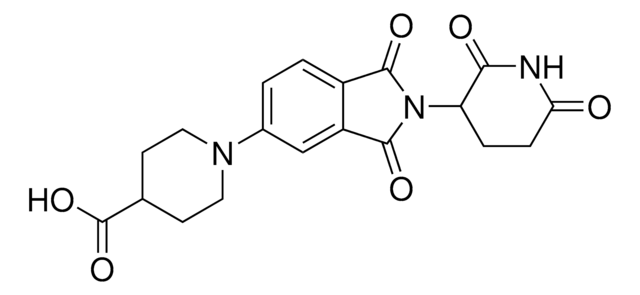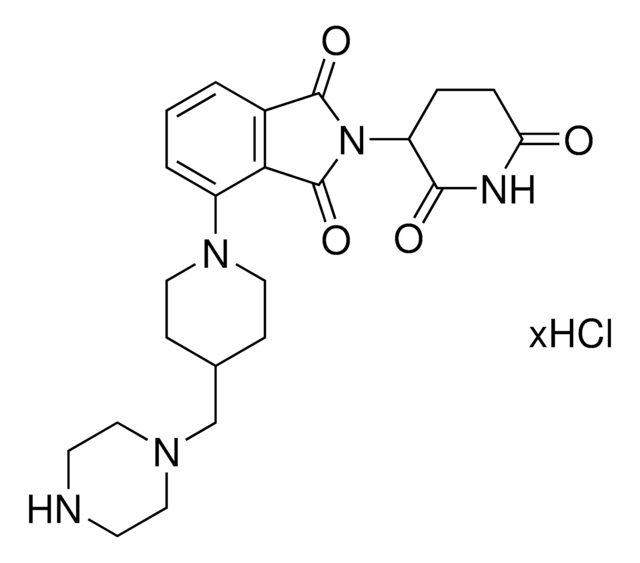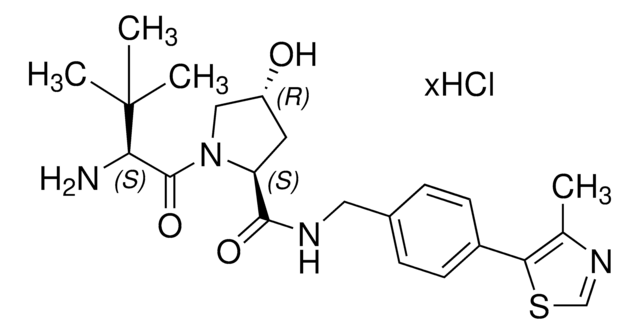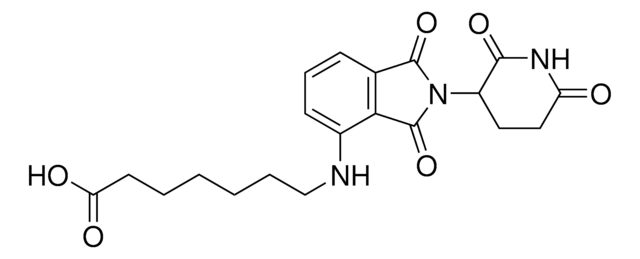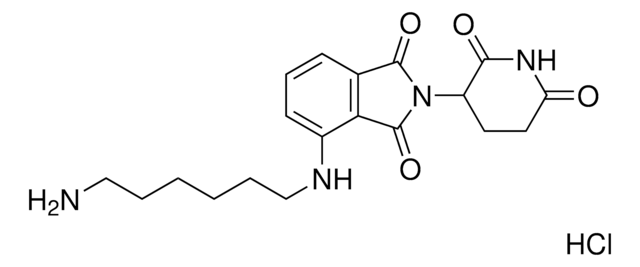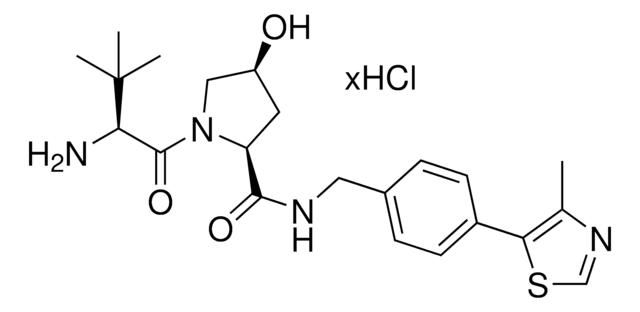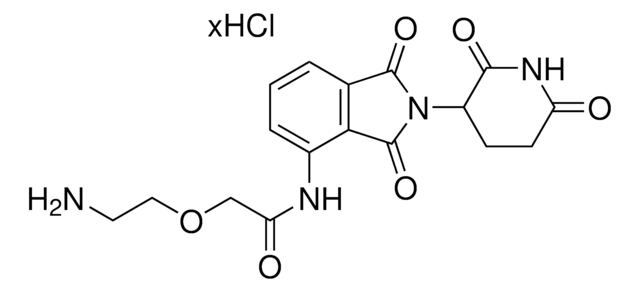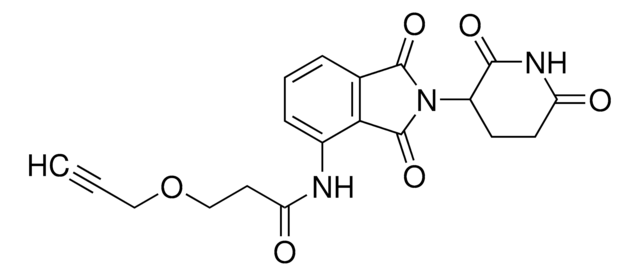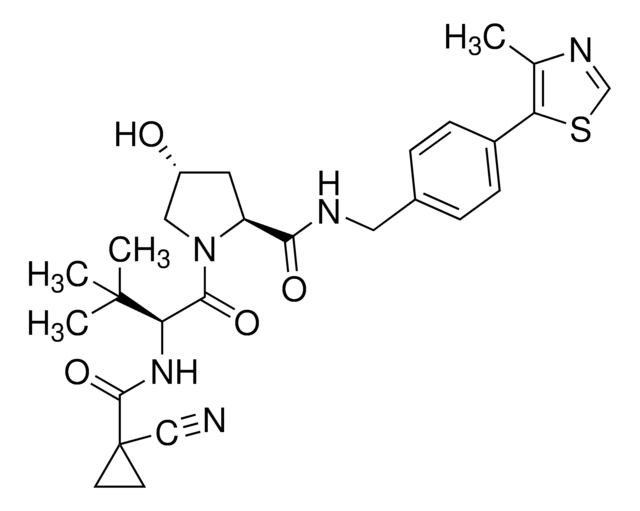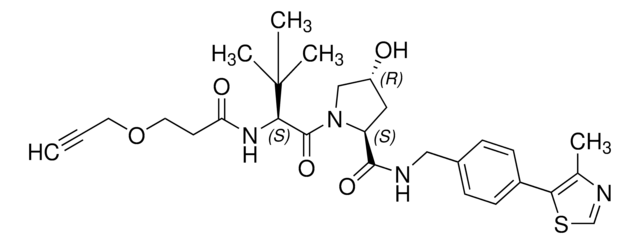Kluczowe dokumenty
901494
N-Methylated pomalidomide
≥98%
Synonim(y):
4-Amino-2-(1-methyl-2,6-dioxopiperidin-3-yl)isoindoline-1,3-dione, E3 Ligase ligand methylated negative control, Ligand for PROTAC® research
About This Item
Polecane produkty
ligand
N-Methylated Pomalidomide
Poziom jakości
Próba
≥98%
Postać
powder or crystals
przydatność reakcji
reagent type: ligand
Warunki transportu
wet ice
temp. przechowywania
2-8°C
ciąg SMILES
O=C(C(CC1)N(C2=O)C(C3=C2C=CC=C3N)=O)N(C)C1=O
Zastosowanie
Inne uwagi
Portal: Building PROTAC® Degraders for Targeted Protein Degradation
Hijacking the E3 Ubiquitin Ligase Cereblon to Efficiently Target BRD4
Targeted Protein Degradation by Small Molecules
Small-Molecule PROTACS: New Approaches to Protein Degradation
Informacje prawne
produkt powiązany
Kod klasy składowania
11 - Combustible Solids
Klasa zagrożenia wodnego (WGK)
WGK 3
Temperatura zapłonu (°F)
Not applicable
Temperatura zapłonu (°C)
Not applicable
Wybierz jedną z najnowszych wersji:
Certyfikaty analizy (CoA)
Przepraszamy, ale COA dla tego produktu nie jest aktualnie dostępny online.
Proszę o kontakt, jeśli potrzebna jest pomoc Obsługa Klienta
Masz już ten produkt?
Dokumenty związane z niedawno zakupionymi produktami zostały zamieszczone w Bibliotece dokumentów.
Klienci oglądali również te produkty
Produkty
Partial PROTACs are a collection of crosslinker-E3 ligand conjugates with a pendant functional group for covalent linkage to a target ligand.
Partial PROTACs are a collection of crosslinker-E3 ligand conjugates with a pendant functional group for covalent linkage to a target ligand.
Nasz zespół naukowców ma doświadczenie we wszystkich obszarach badań, w tym w naukach przyrodniczych, materiałoznawstwie, syntezie chemicznej, chromatografii, analityce i wielu innych dziedzinach.
Skontaktuj się z zespołem ds. pomocy technicznej
